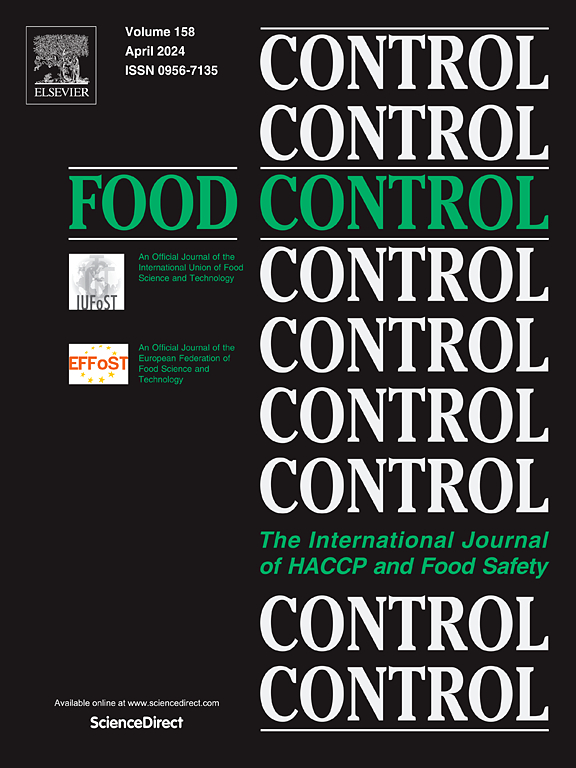Investigating the synergistic effects of acylglycerols on the selective formation of 3-MCPD and glycidyl esters in model soybean oil systems
IF 5.6
1区 农林科学
Q1 FOOD SCIENCE & TECHNOLOGY
引用次数: 0
Abstract
The 3-monochloropropane-1, 2-diol esters (3-MCPDEs) and glycidyl esters (GEs), which are recognized as contaminants often produced during the deodorization process of refined edible oils, have garnered widespread attention and research interest in recent years due to their potential health risks to humans. Although there have been studies on the formation mechanisms of 3-MCPDEs and GEs, further clarification is still needed in the intrinsic synergistic effects of precursors. Herein, the synergistic effects of acylglycerols, including monoacylglycerols (MAGs), diacylglycerols (DAGs), and triacylglycerols (TAGs) on the formation of 3-MCPDEs and GEs were innovatively investigated through simulated deodorization experiments in model soybean oil systems. Additionally, the effects of simulated deodorization conditions, including temperatures, heating duration, chloride contents, and acylglycerol compositions on the production of 3-MCPDEs and GEs, were also investigated. The results indicated that under the simulated deodorization process and in the presence of chloride ions, the formation of 3-MCPDEs and GEs was facilitated by the synergistic interaction among MAGs, DAGs and TAGs. It is noteworthy that MAGs were more susceptible to forming 3-MCPDEs in the presence of chloride ions, whereas GEs predominantly resulted from the cyclization reaction of DAGs. Concurrently, when the MAGs content was less than 1%, or the presence of DAGs was less than 4% in the model system, the formation of both 3-MCPDEs and GEs was found to be below the EU regulatory limits, thus offering a solid theoretical basis for the control of 3-MCPDEs and GEs in refined oils.

求助全文
约1分钟内获得全文
求助全文
来源期刊

Food Control
工程技术-食品科技
CiteScore
12.20
自引率
6.70%
发文量
758
审稿时长
33 days
期刊介绍:
Food Control is an international journal that provides essential information for those involved in food safety and process control.
Food Control covers the below areas that relate to food process control or to food safety of human foods:
• Microbial food safety and antimicrobial systems
• Mycotoxins
• Hazard analysis, HACCP and food safety objectives
• Risk assessment, including microbial and chemical hazards
• Quality assurance
• Good manufacturing practices
• Food process systems design and control
• Food Packaging technology and materials in contact with foods
• Rapid methods of analysis and detection, including sensor technology
• Codes of practice, legislation and international harmonization
• Consumer issues
• Education, training and research needs.
The scope of Food Control is comprehensive and includes original research papers, authoritative reviews, short communications, comment articles that report on new developments in food control, and position papers.
 求助内容:
求助内容: 应助结果提醒方式:
应助结果提醒方式:


